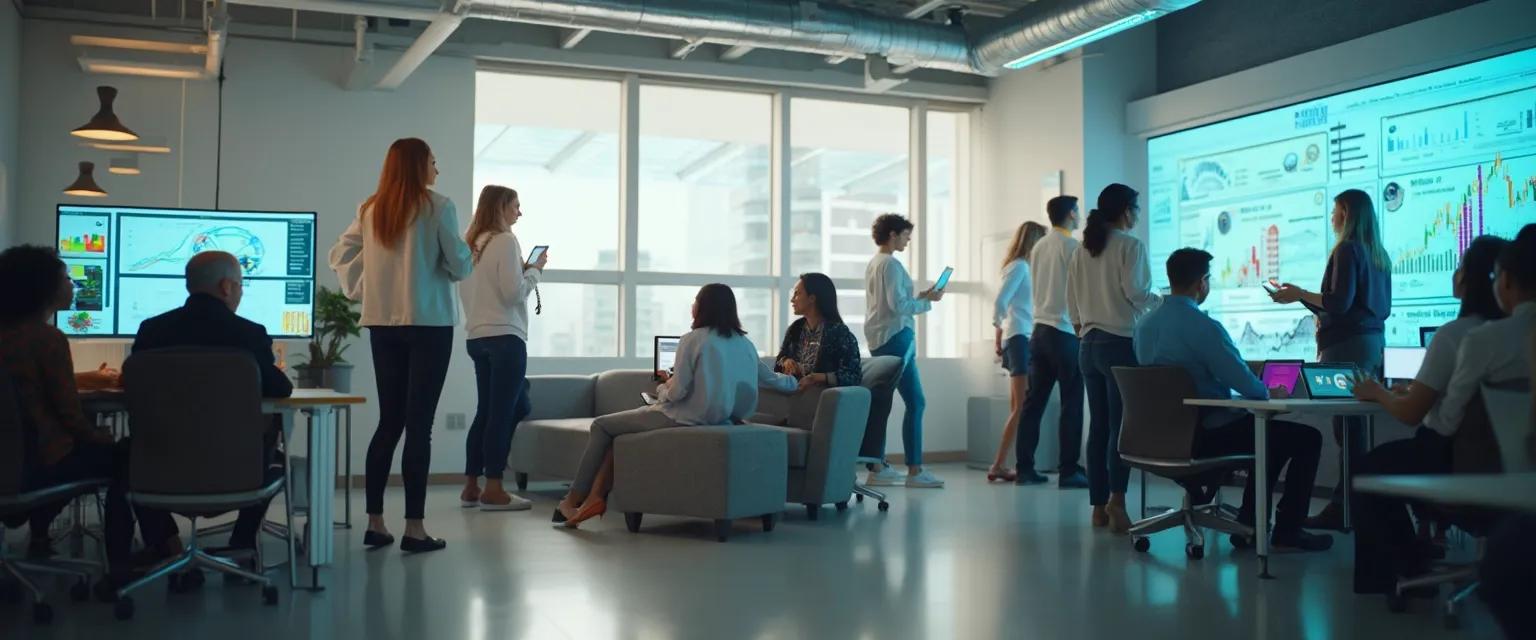5 Practical Ways to Cultivate Awareness in Workplace Without Meetings
Ever noticed how your calendar seems to be a never-ending parade of meetings about meetings? The irony is striking – we schedule meetings to improve awareness in workplace settings, yet these very gatherings often become the biggest obstacles to productivity and actual awareness. Research shows the average professional spends 23 hours per week in meetings, with up to 50% of that time considered unproductive. That's a lot of hours that could be spent on meaningful work while still maintaining team awareness.
Cultivating awareness in workplace environments doesn't require everyone sitting in the same room nodding along to status updates. In fact, neuroscience suggests our brains process information more effectively when we can engage with it at our optimal times. The science behind asynchronous communication reveals that allowing team members to absorb and contribute information when they're most cognitively sharp leads to better information retention and productivity.
Let's explore five practical strategies that boost awareness in workplace settings without adding another calendar invite to anyone's day.
Building Awareness in Workplace Through Visual Management
Visual management transforms abstract information into digestible visual formats that our brains naturally process more efficiently. Digital dashboards serve as centralized hubs where team members can check project statuses, key metrics, and upcoming deadlines at their convenience – no meeting required.
Kanban boards, whether physical or digital, represent one of the most effective awareness in workplace tools available. These visual workflow systems create transparency around who's working on what, where bottlenecks exist, and what's coming next in the pipeline. Tools like Trello, Asana, or Monday.com provide digital Kanban functionality that updates in real-time.
Digital Dashboard Implementation
When implementing visual management systems, prioritize simplicity and accessibility. The most effective dashboards display only essential information with clear visual hierarchies. Consider using color-coding systems that intuitively communicate status – green for on-track, yellow for potential issues, red for immediate attention required.
Research indicates that visual processing accounts for 30% of our brain's cortical function, making visual management particularly effective for enhancing cognitive processing and awareness in workplace environments.
Enhancing Awareness in Workplace with Asynchronous Check-ins
Structured digital check-ins provide the benefits of status meetings without requiring synchronous attendance. These brief updates allow team members to share progress, obstacles, and needs while respecting everyone's focus time and productivity rhythms.
Tools like Slack, Microsoft Teams, or specialized platforms like Range or Standuply facilitate these asynchronous check-ins with prompts that gather consistent information: What did you accomplish yesterday? What are you working on today? What obstacles are you facing?
Check-in Frequency Best Practices
The optimal frequency for asynchronous check-ins depends on your team's workflow and project pace. Daily updates work well for fast-moving projects, while weekly check-ins might suffice for longer-term initiatives. The key is consistency – establishing a reliable rhythm creates predictable awareness in workplace communication without interrupting deep work.
For global teams, asynchronous check-ins eliminate the challenge of finding meeting times that work across multiple time zones, making them particularly valuable for distributed workforces.
Deepening Workplace Awareness Through Cross-Functional Experiences
Job shadowing creates natural awareness in workplace environments by allowing team members to observe how their work impacts and integrates with others'. Unlike formal meetings that discuss collaboration in theory, shadowing provides firsthand experience of interdependencies and pain points.
Role rotation programs take this concept further by temporarily placing team members in different positions. This experiential learning builds empathy and awareness far more effectively than any slide presentation could. When someone from marketing spends time with the customer service team, they gain invaluable insights into how their campaigns impact customer experiences.
Structured Shadowing Programs
Effective shadowing isn't just casual observation. Create structured programs with clear learning objectives and reflection components. Schedule regular shadowing days where team members can sign up to follow colleagues from different departments for half-day sessions.
Organizations implementing cross-functional experiences report measurable improvements in collaboration quality and problem-solving efficiency. These improvements stem from enhanced awareness in workplace contexts – understanding not just what other teams do, but why and how they do it.
Measuring the impact of these cross-functional experiences can be done through collaboration metrics, error reduction, and qualitative feedback about improved understanding across departments. Many organizations find these experiential approaches create more lasting awareness in workplace environments than formal training programs.
Cultivating meaningful awareness in workplace settings doesn't require sacrificing productivity to meeting overload. By implementing visual management systems, structured asynchronous check-ins, and cross-functional experiences, teams can develop deeper understanding while preserving valuable focus time. The most effective awareness in workplace strategies recognize that how we share information matters as much as what we share.




